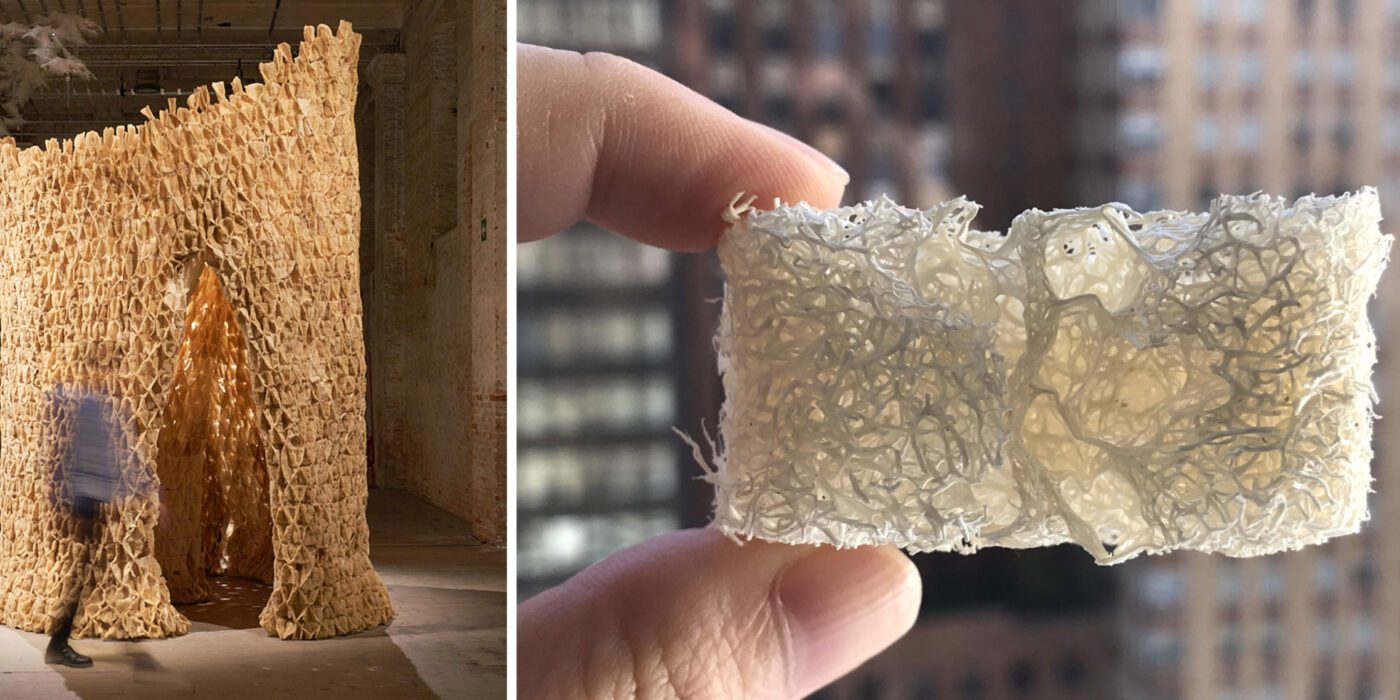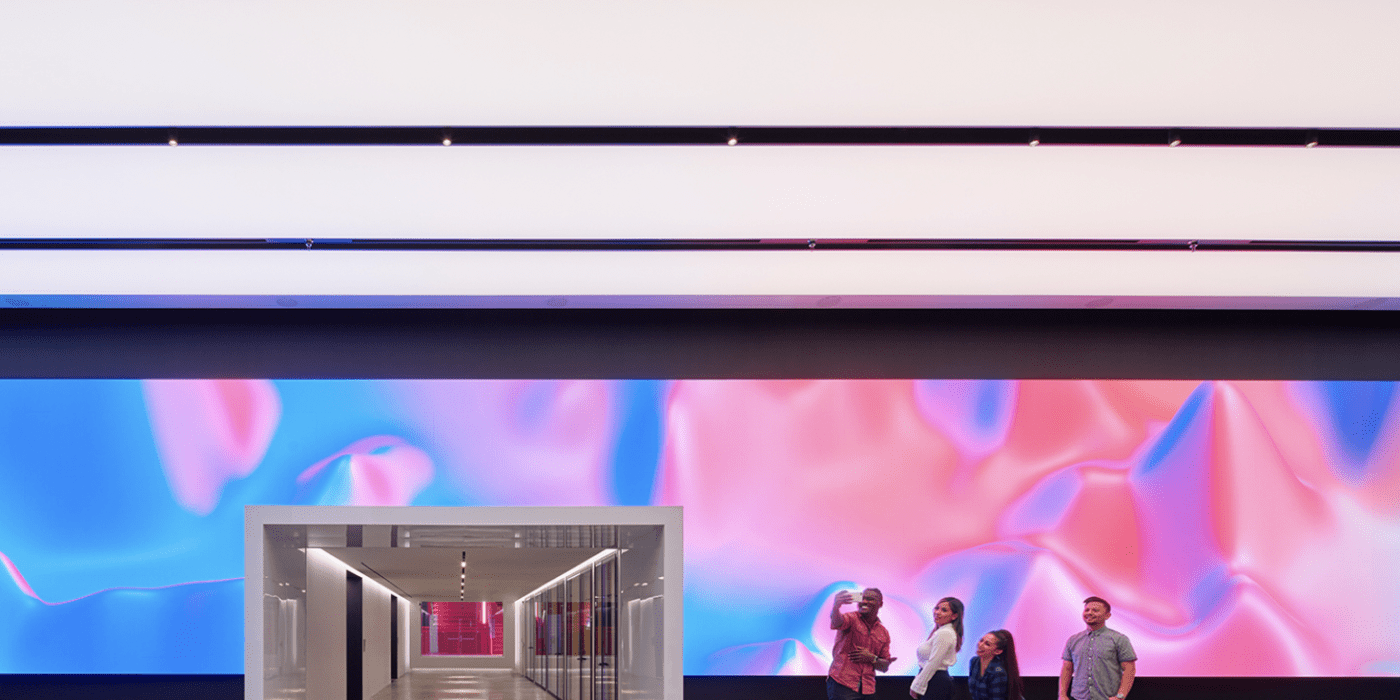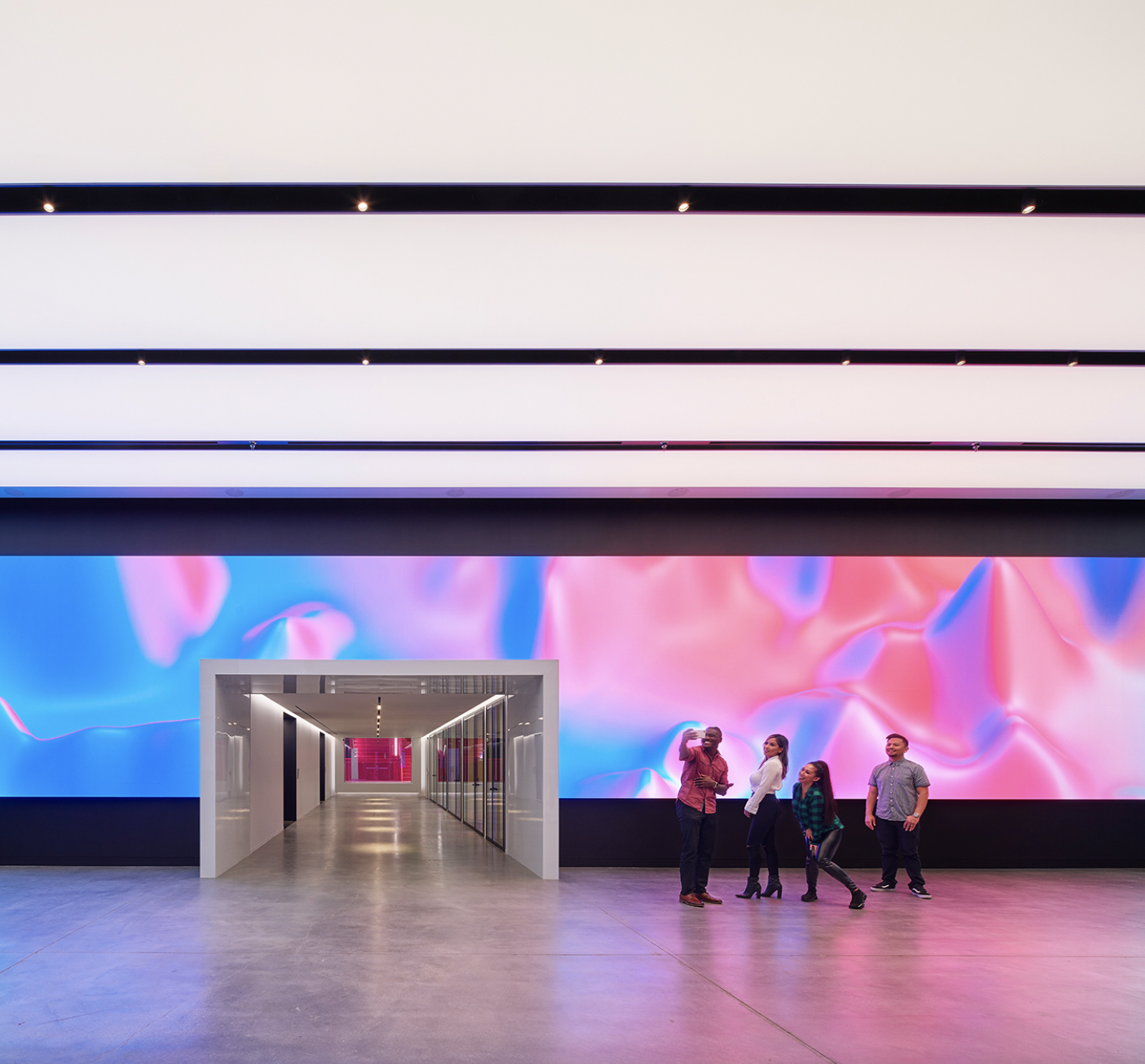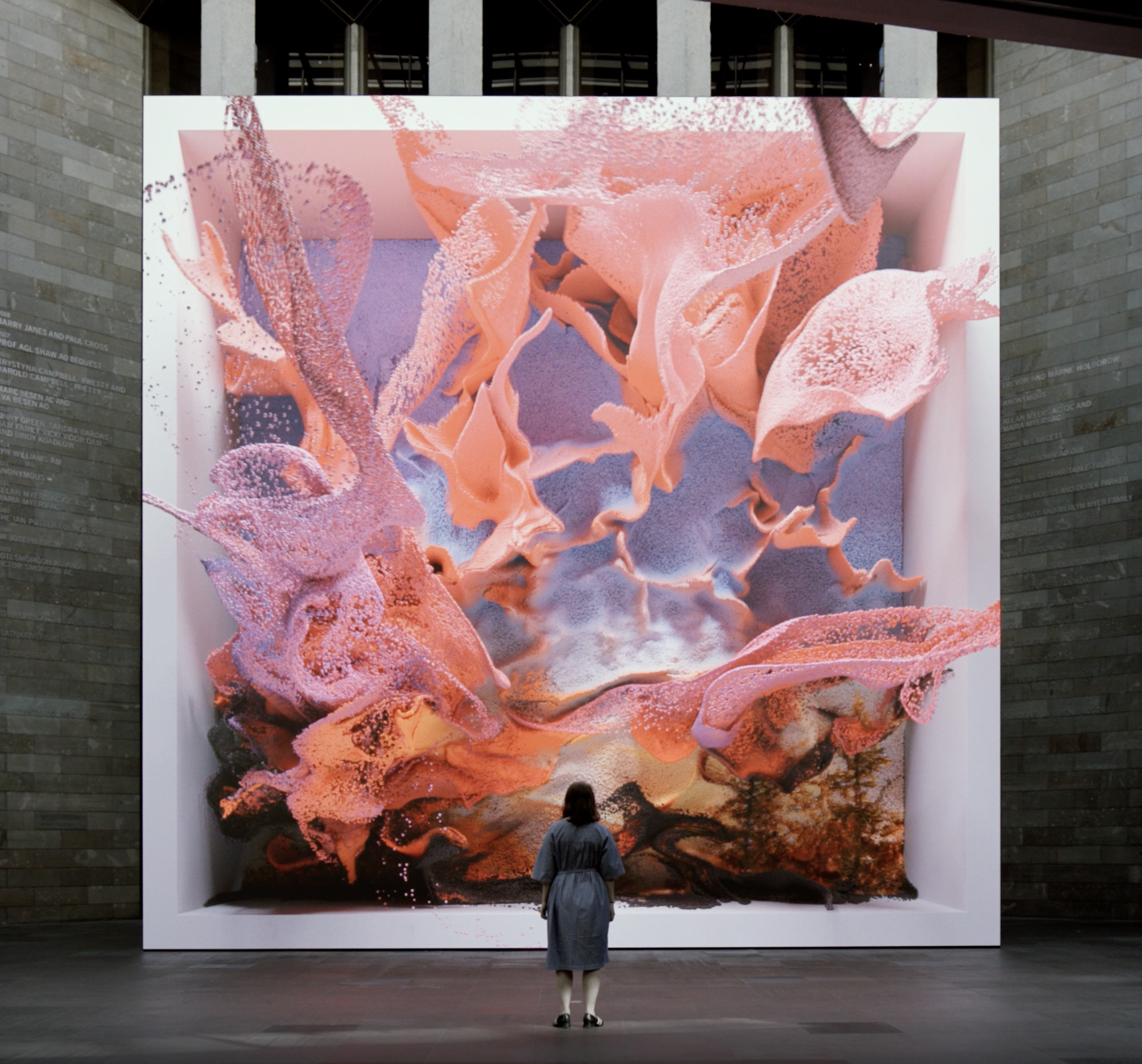Material Trends: “Eunomia” Depicts a Bold Future of Design in Balance With Nature
A new series of reports on macro design trends reveals fascinating insights into the direction in which architects and designers are traveling — and harmony lies at the heart of the first publication. In collaboration with The Prospectivists and Broadside Studios, material research and resource platform Material ConneXion has released its first major trend report, entitled Eunomia, which can be interpreted as “Fair Measure or the Good Norm.” Originally coined for a period of societal reform in Ancient Greece, Eunomia aimed to impose harmonic rules to counterbalance the consequences of human excess.
Learn More and Access the Full Report
This macro trend has clearly been catalyzed by the global pandemic. “As a reaction to months of lockdown, the fascination for the great outdoors, wellbeing and extreme sports have become deeply rooted in urbanized populations that increasingly aspire to experience a very specific and direct relationship to Nature,” states the report.
This phenomenon is linked with a rise in subcultures that recognize and embrace society’s interdependence with the natural world, developing new systems and products that are deeply informed by biological systems. Eunomia presents a diverse range of case studies to illustrate how this trend can be seen in action, from tree-bark-inspired wearables and moss-covered furnishings to bacteria-grown paint and 3D-printed waste wood tiles — complete with in-built planters.
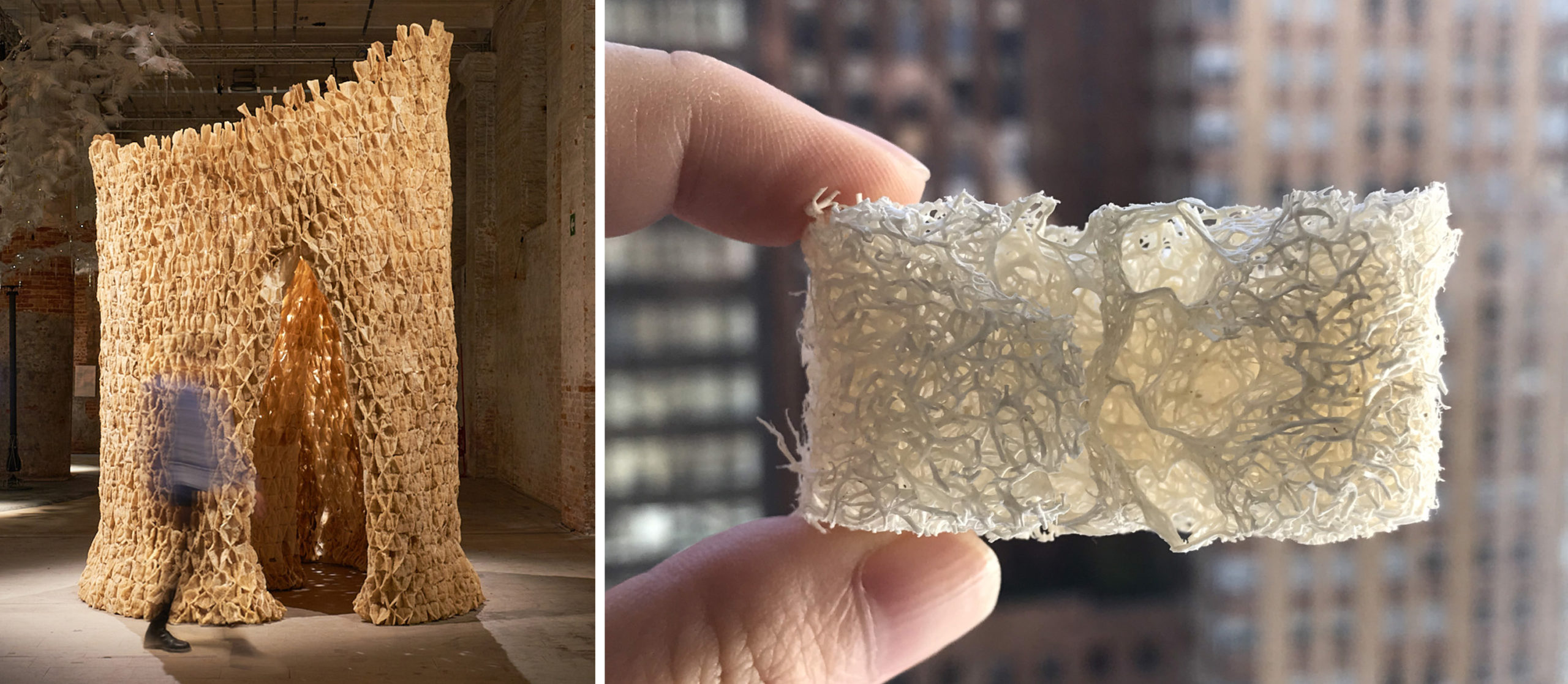
Eunomia’s themes evoke images of numerous projects from last season’s A+Awards, including The Living’s “Alive” installation, which won a Finalist accolade in the Experimental Design category. “Alive” is an experiment in multi-species architecture: a room made of porous, organic material with both macro-spaces for humans and micro-spaces for microbes, with interfaces for exchanges among different species. Photos courtesy of The Living
For architects, the report is a veritable goldmine of inspiration. Biophilic design, resilient architecture, eco-conscious materials and sustainable construction processes are all touted within the ‘Innovation Concepts’ section, with stunning case studies of these concepts being put into practice. Standout examples include Casa Merida, a house designed by Ludwig Godefroy to “withstand the local climate, using locally sourced materials and traditional Mayan features: tall air paths and punctual green areas freshen the circulating air, providing a natural cooling sensation.”
Meanwhile, Tanya Rey’s Verdant Project presents 3D-printed ceramic columns that are designed to allow moss to grow across every surface, forming a new type of architectural ‘coating’ that blends manmade materials with nature. Additionally, Brigitte Kock and Irene Roca Moracia’s “bio concrete” material is made from invasive species such as Japanese knotweed and American crayfish, providing an “example of how polluting building materials can be transformed into new ‘economic and ecological’ value enhancing natural aesthetics, while helping to restore local biodiversity.”
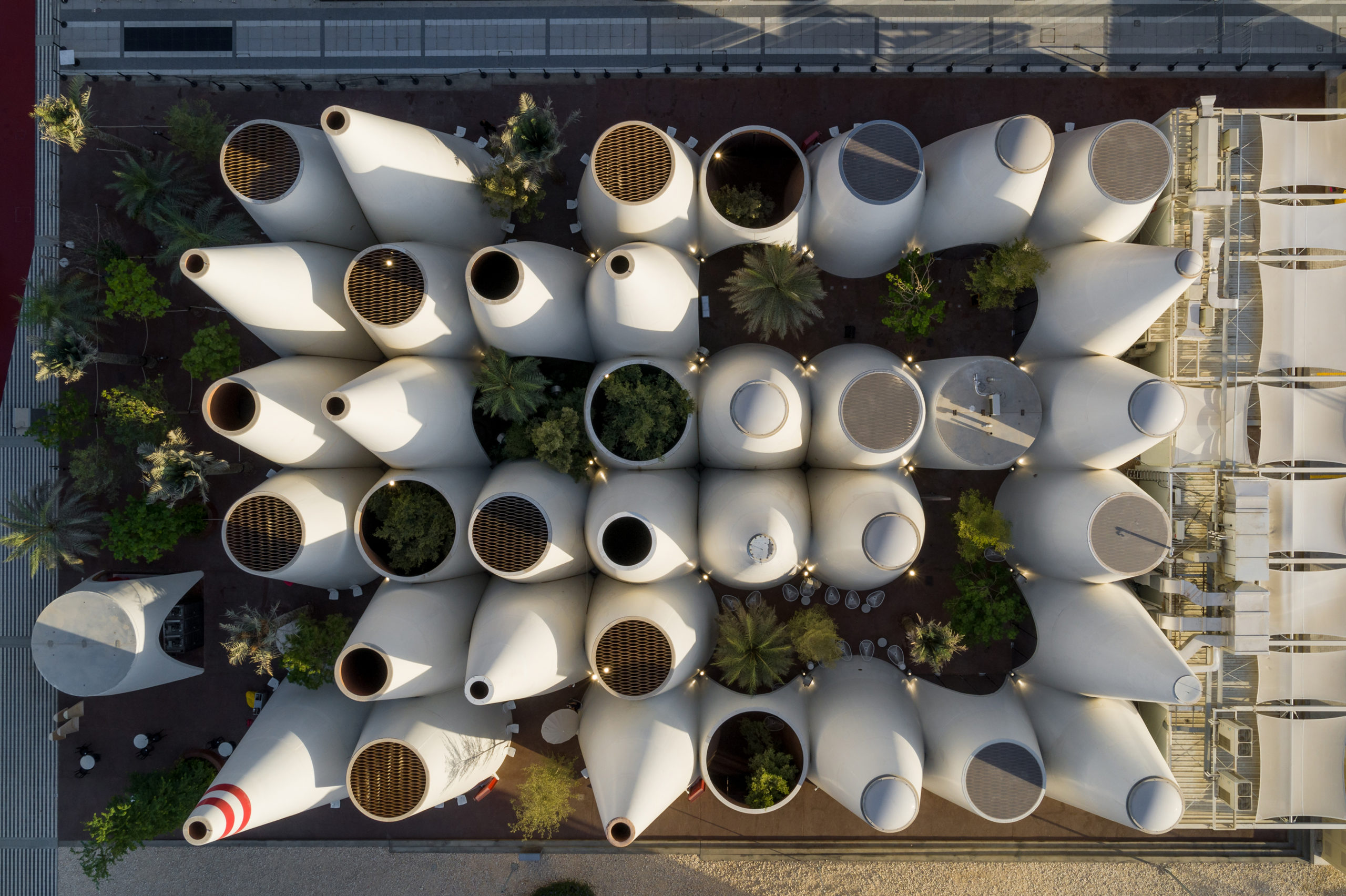
The report brings to mind projects such as Querkraft Architekten’s A+Award-winning Austrian Pavilion for the 2020 Dubai Expo. Combining local building traditions and intelligent Austrian climate engineering, a series of 38 clay plaster cones enables conventional air conditioning technology to be largely avoided, saving three quarters of the energy needed for a comparable building. Photo by Dany Eid/Expo 2020 Dubai
The report wraps up with ‘Design Ideations’, a series of vibrant, complex mood boards tied together along both aesthetic and thematic lines. These diverse yet cohesive palettes should provide architects and designers with fertile ground for continued exploration of the concepts found throughout the report. The biggest takeaway? The power of Nature is only building, and creatives must surely work with it — rather than against it — in order to thrive in the upcoming decade.
To see the full trend report and receive new material insights each month, become a member of Material ConneXion. Learn more >
Top image: Austrian Pavilion for the 2020 Dubai Expo by Querkraft Architekten

